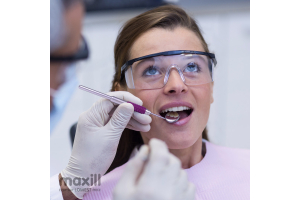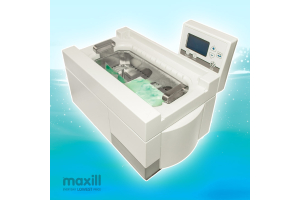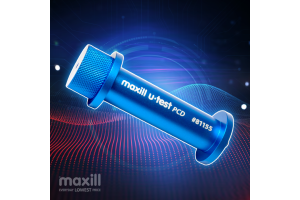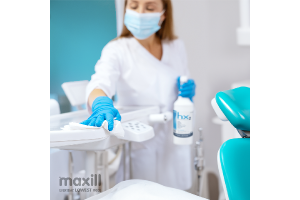Does Hand Soap and Ultrasonic Bath Solution in a Dental Office Require a DIN?
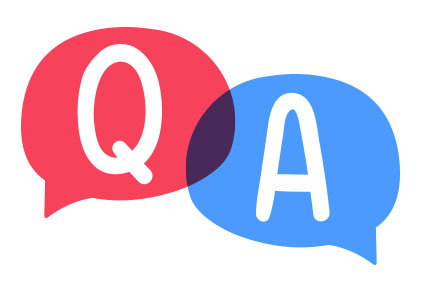
The staff at maxill is constantly doing research on any and every topic related to Infection Prevention and Control (IPAC).
In the latest news releases, it is now common knowledge that a serious virus, the Coronavirus (2019-nCoV), is an evolving situation.
The Ministry of Health and Long-Term Care, Public Health Sectors, PIDAC, CDC and WHO are all working diligently to ensure the containment of the virus and public awareness for surveillance.
As learned from past outbreaks, (SARS) health care providers play a vital role in risk management and assessment.
The role of the dental professional is to implement routine screening methods to identify individuals with acute respiratory infections.
Within the scope of hard surface disinfectants, what is the definition of a DIN?
Drug Identification Number (DIN)
In Canada, disinfectants are regulated as drugs under the Food and Drugs Act and Regulations.
Disinfectant manufacturers must obtain a drug identification number (DIN) from Health Canada prior to marketing, which ensures that labelling and supporting data have been provided and that it has undergone and passed a review of its formulation, labelling and instructions for use.
Here's a link to a useful document.
So far, we can then conclude that a product that has claims to offer disinfectant properties MUST have a DIN.
What is the definition of cleaning and cleaner?
Cleaning: The physical removal of foreign material (e.g. dust, soil) and organic material (e.g. blood, secretions, excretions, microorganisms).
Cleaning physically removes rather than kills microorganisms.
It is accomplished with water, detergents and mechanical friction.
Thorough cleaning is required before a device/equipment can be disinfected, as organic material may inactivate a disinfectant.
It can then be concluded that cleaning removes microorganisms rather than killing microorganisms.
Only disinfecting and sterilizing can kill microorganisms.
As per the theory of Spaulding’s Classification, disinfecting to be used on non-critical items and heat sterilizing for all critical items.
Cleaner: A substance, or mixture of substances, that physically removes foreign material (e.g., soil, inorganic and organic material) from environmental surfaces and inanimate objects due to the detergent or enzymatic properties of the formulation.
Here's a link to a useful document.
It can then be concluded that a cleaner physically removes debris due to the enzymes in the cleaner.
What does the ultrasonic bath solution do?
An ultrasonic bath solution has enzymatic cleaning properties, but it does not disinfect.
Products that disinfect on a hard surface need a DIN and products that disinfect on a human surface, like hand sanitizer, can have an NPN or DIN depending on the medicinal ingredient.
Health Canada does not require an enzymatic cleaner to be listed with DIN because it is not making claims on being a disinfectant.
How is the ultrasonic bath used in a dental office?
Let’s identify how it is used in a dental office.
Does the office use it as anything but a cleaner?
No, they use it in the ultrasonic bath, DUWL and suction lines as a cleaner.
Offices are using it as stated on the label of the product.
It is not being used as a disinfectant.
So ultrasonic bath solutions (example: Zymax) are not pretending to be anything but a cleaning detergent.
The MIFU of the ultrasonic bath is stating that in the bath the user is to use an enzymatic cleaner and the label does not state the product is a disinfectant.
IPAC standards state instruments must be cleaned with an enzymatic cleaner prior to sterilization.
In the one-way workflow of reprocessing instruments, the step prior to sterilization is cleaning.
So again, the ultrasonic bath solution is fulfilling its purpose to clean before sterilizing.
Other Applications
In its application to DUWL, a cleaner is also doing its intended job to clean before disinfecting in the 3 part process of a)cleaning, b)disinfecting and c)testing.
In its use for suction lines, at this point, suction lines are instructed to be cleaned, so again the enzymatic solution is cleaning the lines.
There are combined products on the market that have claims for being both a cleaner and disinfectant… in that case that product would need a DIN.
However, when the product is a cleaner and cleaner only, a DIN is not necessary.
What about hand soap? What does hand soap do?
It cleans the hands.
Hand soap that does not disinfect does not need a DIN or an NPN.
Like the ultrasonic bath solution, it is claiming to be a cleaner and nothing more.
Let’s compare the surgical scrub soap used in hospitals.
Does it have a disinfection claim?
Yes, so it would have either a DIN or NPN.
This soap usually contains chlorhexidine gluconate, benzalkonium chloride or triclosan.
What does Public Health Ontario state for soap and hand sanitizers?
ALCOHOL-BASED HAND RUB (ABHR): ABHR available for clinical office settings ranges in concentration from 60% to 90% alcohol.
Norovirus is inactivated by alcohol concentrations ranging from 70% to 90%.
For this reason, a minimum concentration of 70% alcohol should be chosen.
ABHR products being considered for purchase must have a Drug Identification Number (DIN) or Natural Product Number (NPN) from Health Canada.
HAND WASHING SOAPS: Plain soaps act on hands by emulsifying dirt and organic substances (e.g., blood, mucus), which are then flushed away with rinsing.
Plain liquid soap is sufficient for general clinical office practice.
Alcohol-based hand rub and liquid soap must be dispensed in disposable containers and must not be “topped up”.
Plain liquid soap in disposable pump bottles is sufficient for general clinical office settings.
Bar soaps must not be used. (Page 23)
Plain soap can be used in a dental office, and would not require a DIN or NPN.
However, the hand sanitizer does require a DIN or NPN.
Note it is DIN OR NPN.
There is also a myth circulating that hand sanitizer MUST have a DIN that an NPN is not acceptable.
NPNs were introduced in 2004 to replace low-risk DIN drugs.
DIN vs NPS depends on the labelled medicinal ingredient.
Antiseptic hand cleansers manufactured using 60 – 70% Isopropyl Alcohol or 60 – 80% Ethyl Alcohol are labelled with an NPN.
Think of the purpose of hand sanitizer, it is used to disinfect human hands, therefore, it can have an NPN.
Following the golden rule from Health Canada… if it is not disinfecting a human or hard surface then it does not need a DIN or NPN.
If the product is being used as per the manufacturer's claims and labelling as a cleaner and not a disinfectant agent, then no DIN or NPN is required.


